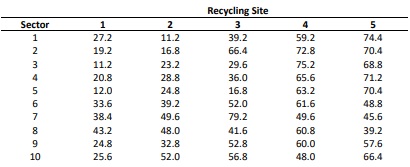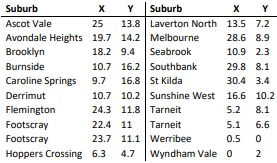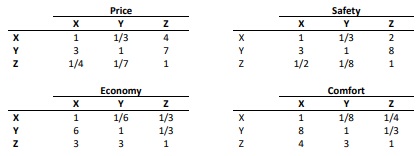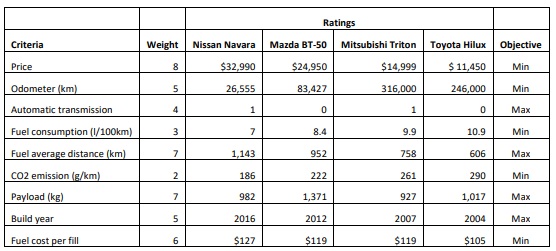Assignment:
Case 1
Recycling is an important and complex activity in Country A. To enable timely operations, the country is divided into 10 sectors and recycling operations are commenced simultaneously in each sector. The recyclable garbage is collected from public bins, loaded into trucks, and transported to recycling sites. Each site can accommodate different amounts of recyclable garbage because of its available land size at the facility. The annual capacities for five recycling sites are given in the table below (in megatonnes):

Each recycling site is installed with facilities that have different recycling efficiencies which are summarised in the table below (in percentages):

The cost of collecting and transporting recyclable garbage primarily depends on the distance between the sectors and the recycling sites. The following table summarises the distances between each sector and each recycling site (in kilometres):

Using historical data, the country estimates the annual volume of the recyclable garbage for each sector in the coming year shown in the table below (in megatonnes):

It will cost approximately $109,603 to move one megatonne of recycling garbage for one kilometre. The management would like to maximise the amount of recycled garbage and minimise the transportation cost.
a. Formulate a multiple-objective linear programming (MOLP) model for this problem in a Word file with a brief description of an equation, and implement the MOLP model in an Excel spreadsheet.
b. Determine the optimal value for each objective in the problem.
c. Suppose the management considers maximising the amount of recycled garbage to be three times as important as minimising the transportation cost. Formulate a GP model to optimise both objectives simultaneously with a brief description of an equation in a Word file, and implement the MOLP model in an Excel spreadsheet. What do the results suggest?
Case 2
Company B has twenty petrol stations across Melbourne. It is creating strategies to consolidate warehouse operations so that there will be two warehouses that supply the stations. The company plans to sell all its extant warehouses and build new, state-of-the-art warehouses. Each warehouse can supply multiple stations; however, each station will be supplied by a single warehouse. The location of each station is summarised in the table below:

The company wants to build its warehouses in locations that minimise the distances to each of the stations it serves. Formulate a non-linear programming (NLP) model for this problem in a Word file with a brief description of an equation, and implement the NLP model in an Excel spreadsheet. What do the results suggest?
Case 3
David Jones is planning to buy a new van for his work as a trader. After narrowing his choices down to three models (X, Y, and Z) within his budget, he is having difficulty in deciding which one to purchase. David has compared each model against one another on the basis of four criteria: price, safety, economy, and comfort. His comparisons are summarised below:

David wants to incorporate all of the four criteria into his final decision. However, the criteria are not equally important. The following matrix summarises his comparisons of the importance of the criteria:

Use analytic hierarchy process to compute the overall score for each van. What do the results suggest?
Case 4
A new trader is interested in finding a utility car. With a limited budget, he does not mind getting a used one. Below is the summary of his criteria and the choices that he has selected as potential cars that he may purchase. Conduct TOPSIS in an Excel spreadsheet to determine the best car that he should purchase. What do the results suggest?
